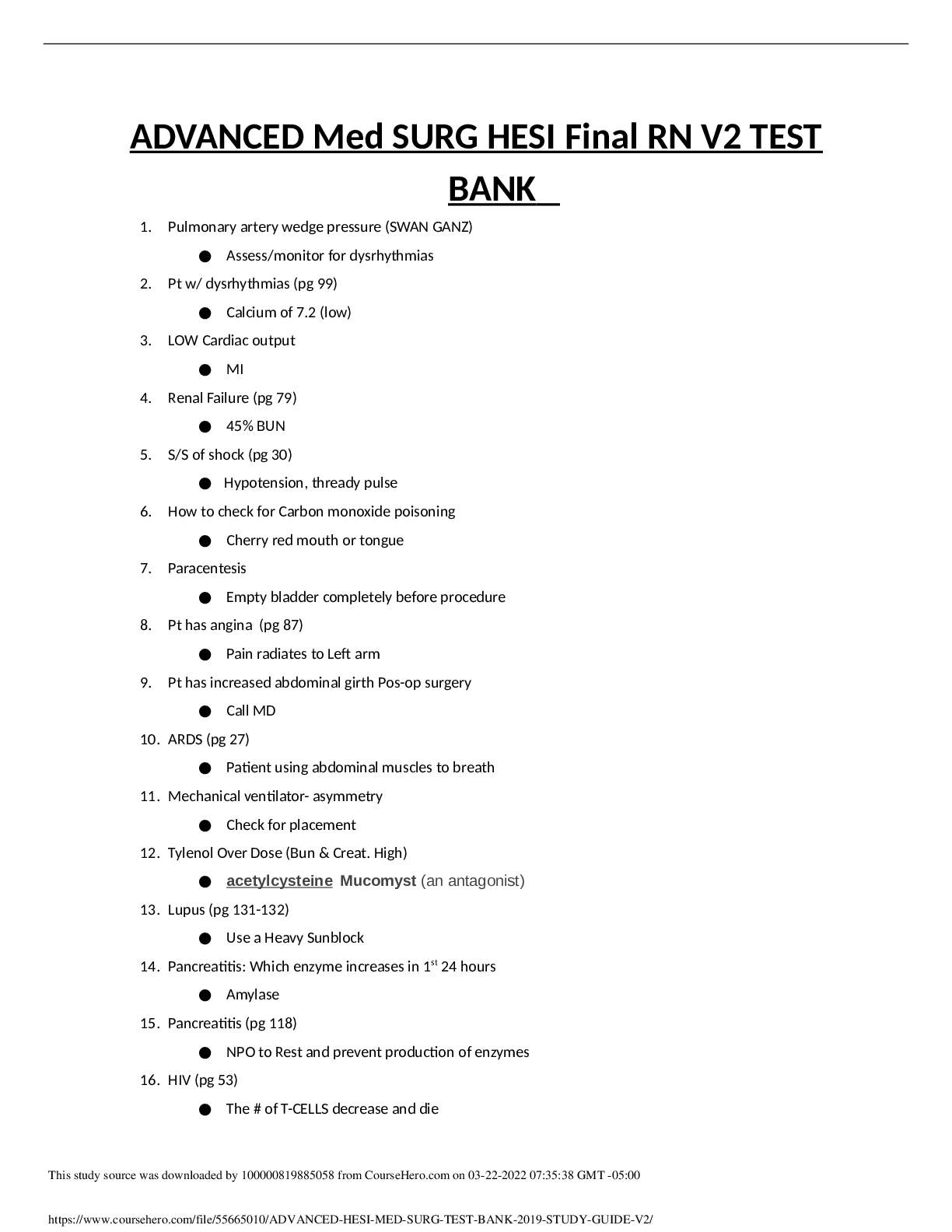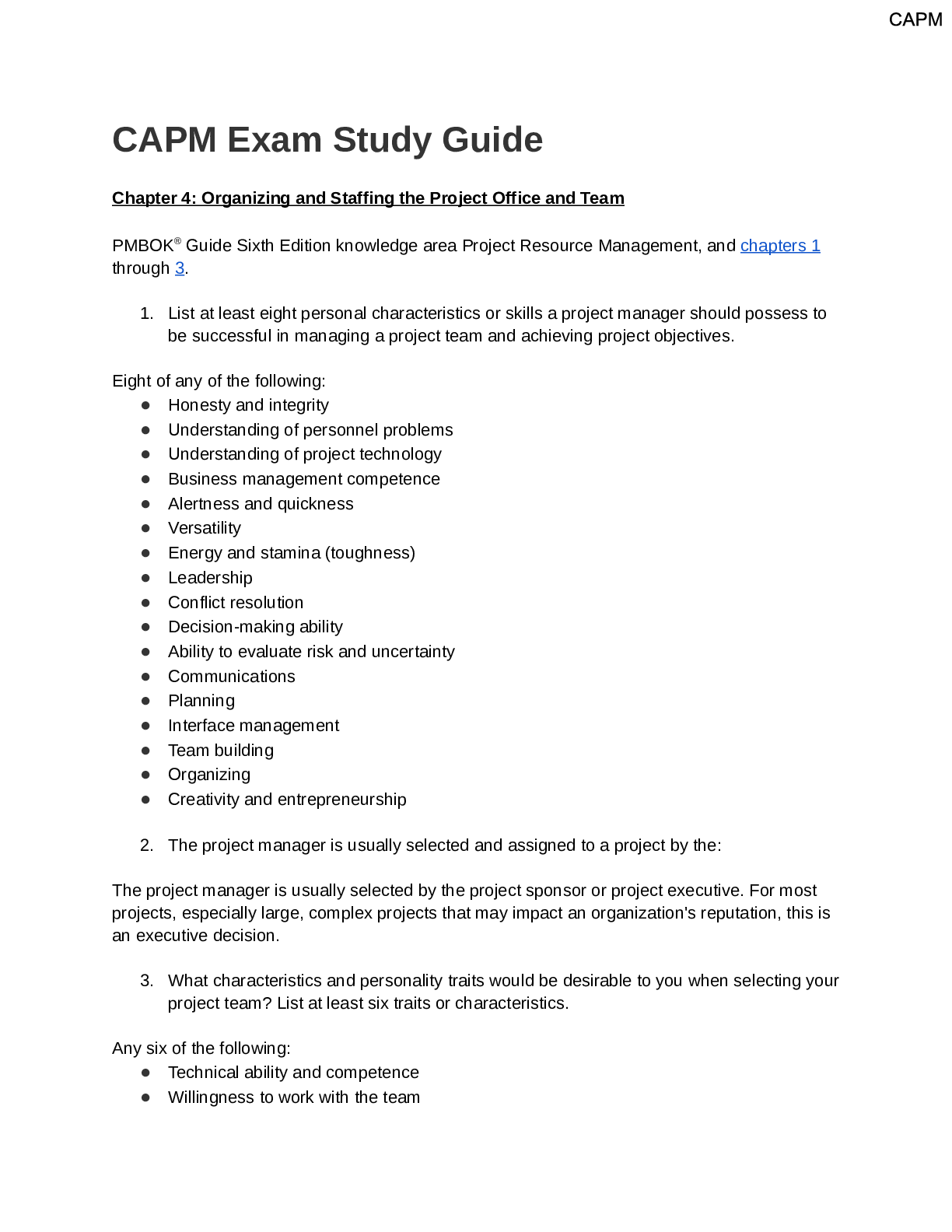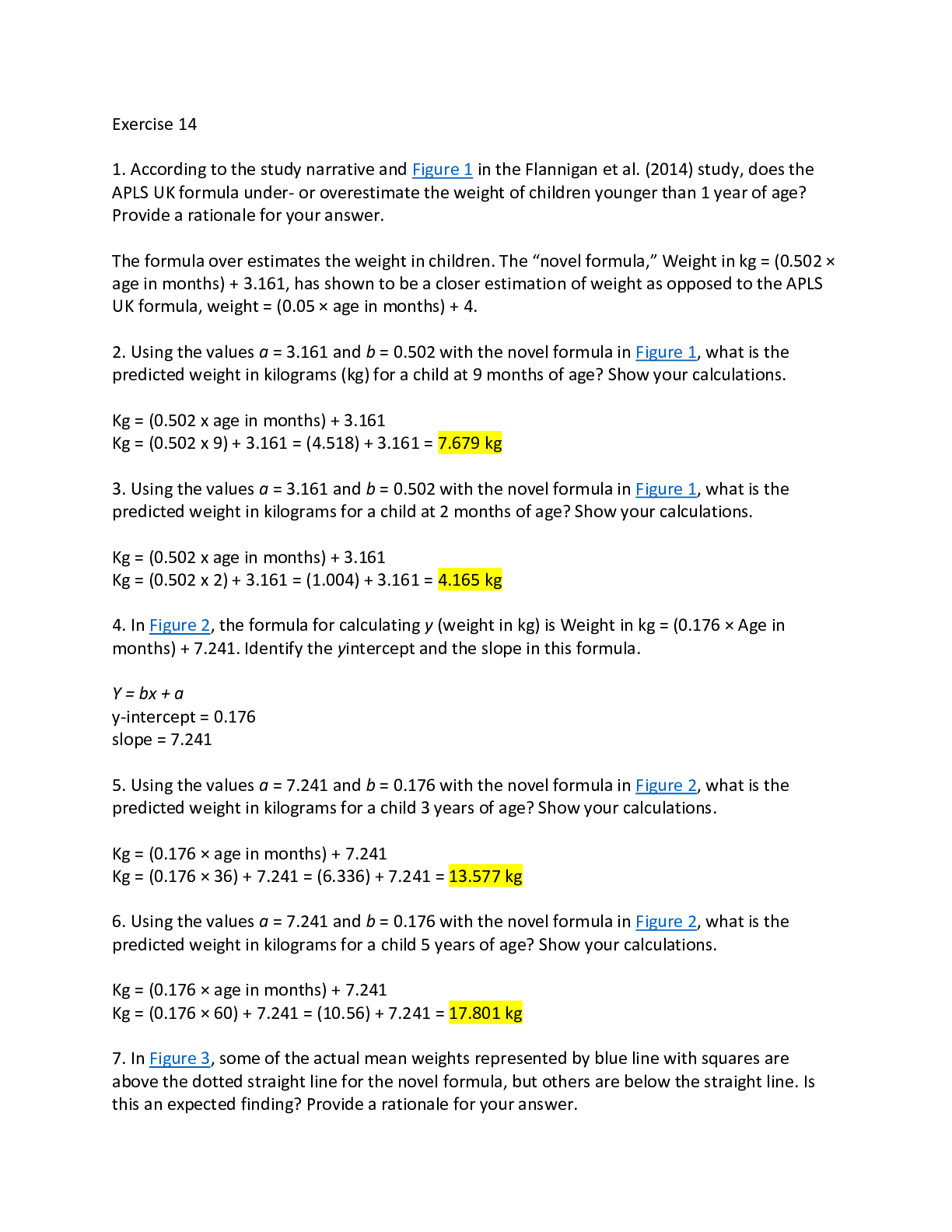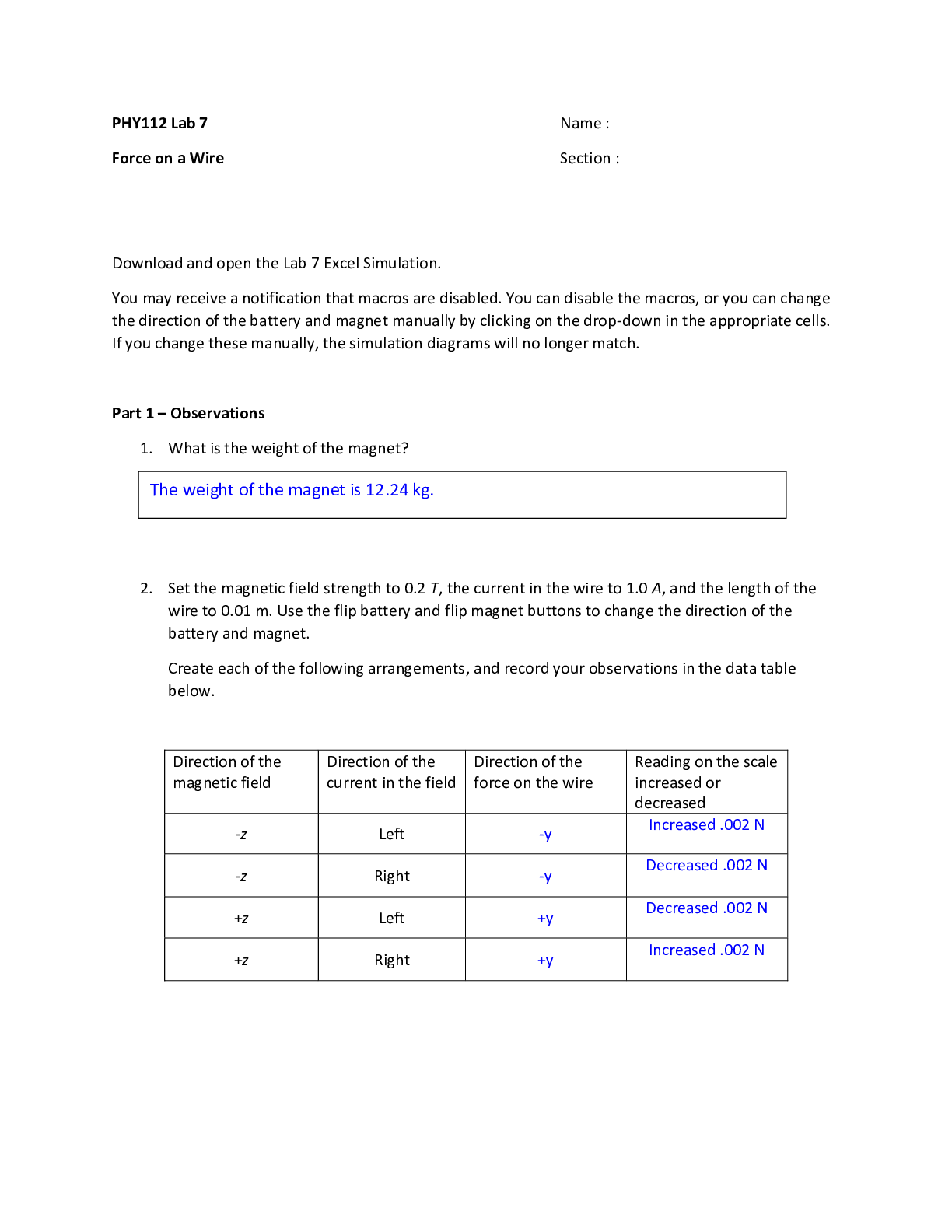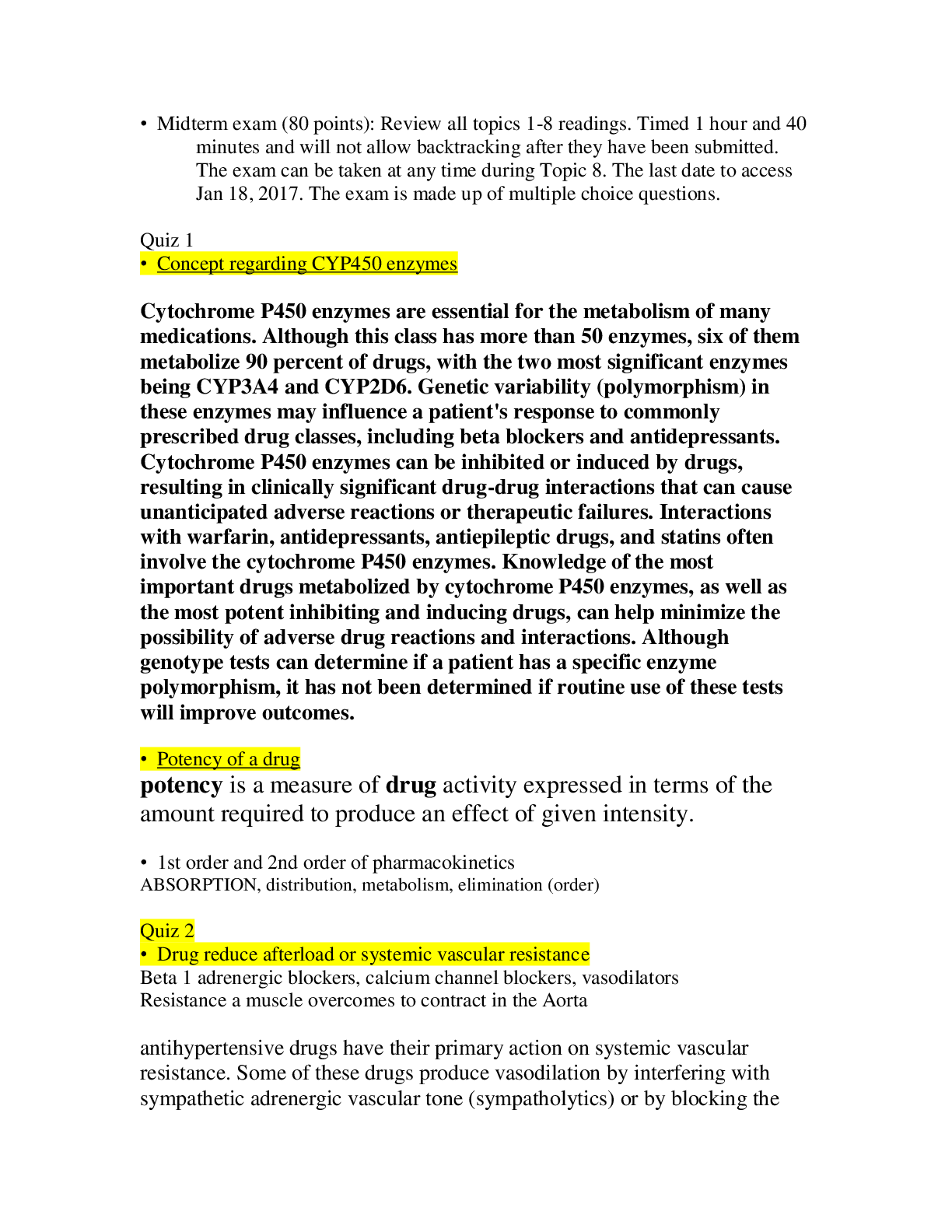*NURSING > STUDY GUIDE > Davis Advantage Week 1 (All)
Davis Advantage Week 1
Document Content and Description Below
TRANSCRIPT: Let’s look at the work horses of the body, the adrenal gland. There are two adrenal glands that are located on the kidneys. The adrenal gland consists of two parts: the cortex and medul... la. The cortex produces mineralcorticoids such as aldosterone, glucocorticoids, such as cortisol, and androgens. The adrenal cortex is stimulated by corticotropin-releasing hormone, known as CRH, from the hypothalamus and adrenocorticotropic hormone, known as ACTH, from the anterior pituitary. The adrenal medulla, on the other hand, produces epinephrine and norepinephrine. The medulla releases these stress hormones in response to sympathetic nervous system activation. One rare form of adrenal insufficiency is Addison’s disease. Think: “Add for Addison’s. Adrenal cortex hormones need to be added.” This primary insufficiency normally results from autoimmune destruction of the adrenal cortex. Decreased cortisol causes hypoglycemia, whereas decreased aldosterone results in decreased sodium and increased potassium levels. Reduced water and sodium may result in hypotension. Reduced androgens may suppress libido in women. Because cortisol and aldosterone production are suppressed, CRH and ACTH levels increase to stimulate the adrenal gland. Secondary adrenal insufficiency is due to a pituitary disorder in which not enough ACTH is produced. Adrenal excess appears in both Cushing’s disease and Cushing’s syndrome. In these conditions, an excess of adrenal cortex hormones is produced. Think – “Cushing’s means there is a ‘cushion’ of extra adrenal cortex hormones.” In a particular form of this excess, Cushing’s disease, the problem is not in the adrenal cortex itself, but rather in the anterior pituitary, as it produces excess ACTH. In Cushing’s disease, a tumor of the pituitary gland produces elevated ACTH from the anterior pituitary. Elevated ACTH stimulates cortisol, which increases blood glucose levels and suppresses wound healing. Fat deposition is also altered, and the individual might experience a “moon face” and “buffalo hump” appearance. Hyperpigmentation also occurs as ACTH is linked to melanocyte-stimulating hormone. In Cushing’s syndrome, there is a hyperactive adrenal gland. Cortisol is high, while ACTH is low, trying to suppress adrenal activity. Prolonged use of corticosteroids can result in Cushing syndrome. Adrenal excess is also a hallmark of pheochromocytoma, a disorder of the adrenal medulla. In pheochromocytoma, epinephrine and norepinephrine levels elevate, resulting in high heart rate and blood pressure. ACTIVITIES: You are providing care to a 35-year-old female patient, Mrs. DeToro, who was admitted to the hospital with weakness, fatigue, nausea, and abdominal pain. When conducting the health history, Mrs. DeToro tells you that she was diagnosed with Addison’s disease a year ago and she is concerned that her current symptoms might be related to her diagnosis. 1. Which assessment findings support your suspicion that Mrs. DeToro is experiencing an adrenal crisis? Select all that apply. ○ Clinical manifestations of an adrenal crisis may include emotional lability, hyperpigmentation due to the increased secretion of melanocyte- stimulating hormone (MSH), and dehydration. Decreased axillary and pubic hair, not hirsutism, would support a diagnosis of adrenal crisis due to a decrease in sex hormones. Hypotension, not hypertension, would also support this diagnosis. 2. Which diagnostic tests do you anticipate to be ordered for Mrs. DeToro by the healthcare provider? Select all that apply. ○ Appropriate diagnostic tests include serum potassium (to monitor for hypokalemia), serum sodium (to monitor for hyponatremia), and a CT scan (to assess for changes in the size and morphology of the adrenal gland). You would not anticipate a serum magnesium level nor an abdominal X- ray for this patient. 3. Mrs. DeToro’s laboratory values indicate she is experiencing an adrenal crisis. Which treatment do you anticipate? ○ Cortisol replacement is the definitive treatment for adrenal insufficiency. Patients presenting with acute adrenal insufficiency require emergency stabilization with IV fluids and glucose, along with IV administration of gluococorticoids (cortisol), such as 50 to 100 mg of hydrocortisone sodium succinate (Solu-Cortef) or 4 to 12 mg of dexamethasone (Decadron). 4. Mrs. DeToro is admitted to the medical-surgical unit for further monitoring. You prepare to conduct an admission assessment. Which actions are appropriate? Select all that apply. ○ The nursing assessment for a patient who is experiencing an adrenal crisis should include monitoring intake and output as well as blood glucose. Fluid loss occurs secondary to lack of mineralocorticoid and glucocorticoid, leading to loss of sodium followed by loss of water through the kidneys. Hypoglycemia occurs due to decreased cortisol. You would monitor for hypotension, not hypertension. While it is appropriate to administer the prescribed IV cortisone and to place the bed in the lowest position, these actions are not conducted during the admission [Show More]
Last updated: 2 years ago
Preview 1 out of 7 pages
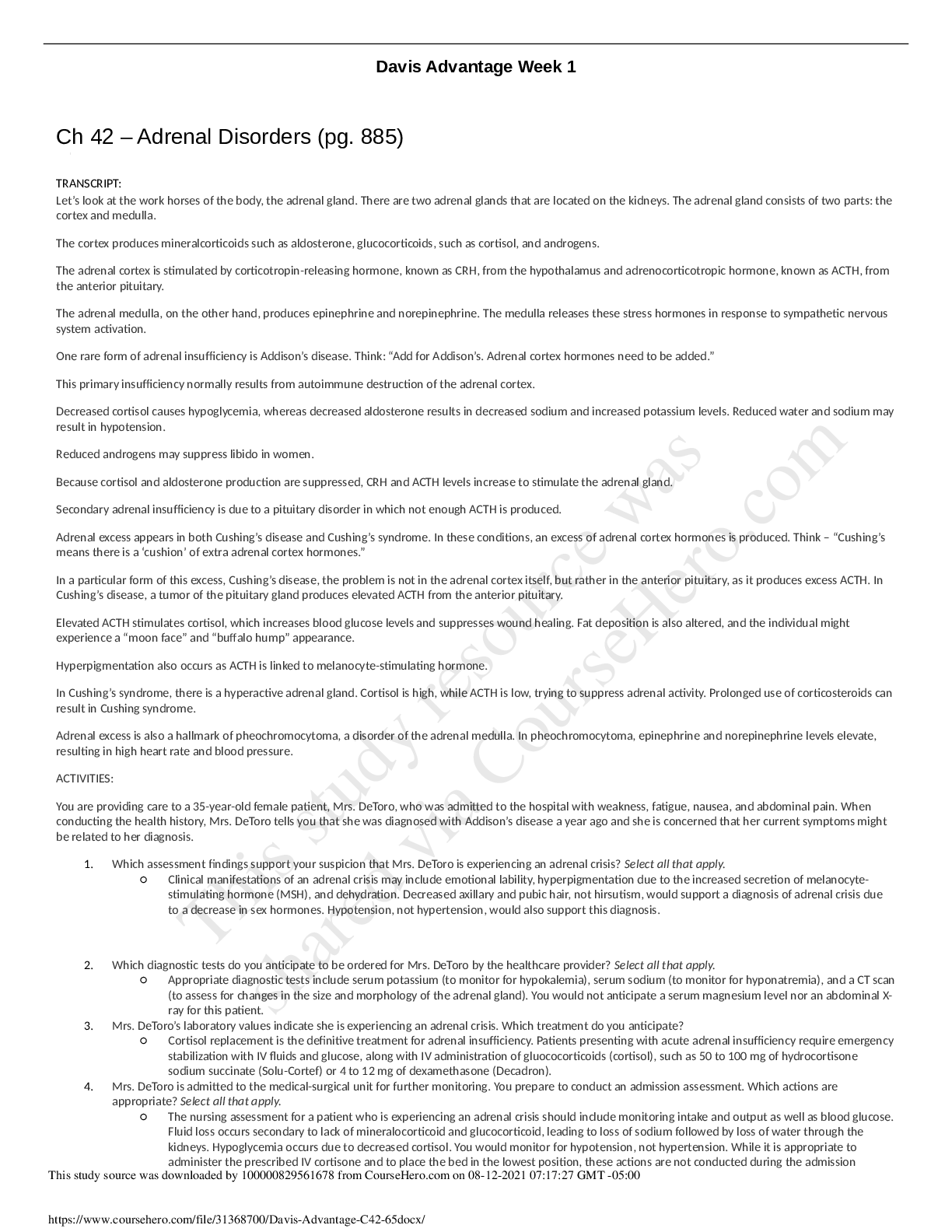
Buy this document to get the full access instantly
Instant Download Access after purchase
Buy NowInstant download
We Accept:

Reviews( 0 )
$12.00
Can't find what you want? Try our AI powered Search
Document information
Connected school, study & course
About the document
Uploaded On
Aug 12, 2021
Number of pages
7
Written in
Additional information
This document has been written for:
Uploaded
Aug 12, 2021
Downloads
0
Views
43

